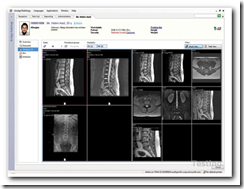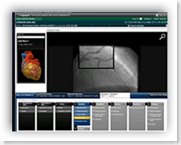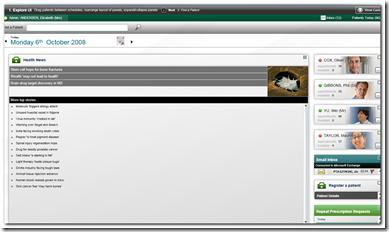If you have read this blog long enough, there are multiple posts about The Common User Interface, an open source project from Microsoft that would in fact have the capabilities to present the same set of templates, data entry screens, etc. at all hospitals and physician offices. The NHS in the UK has been the pioneering force in bringing the project to light; however there have been thousands of downloads from the site, so there are developers working all over to hopefully bring this to light. 
I don’t know of any physician or medical staff member who would not like to see the same interface at any hospital or doctor’s office, as how many different software applications do they have time to learn today and still provide high quality healthcare. Unfortunately just due to the way medical records have evolved with different companies creating their own software solutions we have a myriad of software applications that are getting more confusing and difficult for the end users all the time, and this really is not just limited to healthcare for that matter.
The project is dynamic and includes some very nice Silverlight effects as well, a real potential winner in my estimation, and the pictures below show how it looks in it’s present form. The related reading has videos and even more additional information to read to learn about the project and how the interface would serve to bring everything together under one roof, and this is open source, so anyone can download and develop, and Linux for Silverlight is out there now too, so it is multiplatform. So would this not be nice to have the same screens whether or not the hospital used Microsoft Amalga, McKesson, Cerner, Epic, Eclipsys, etc. just to name a few, to have the same or similar interface at all hospitals, something HHS might want to take a look at when considering common templates and user interfaces maybe, why start at this point and try to reinvent the wheel for goodness sake when so much of the code needed is already done and more is on the way with developers. BD





The Department of Health and Human Services should support creation of standardized, structured templates to ease the collection of regulatory data via electronic health records, according to an advisory group. HHS also should commission an expert panel to investigate documentation and data required by regulatory, licensing, accrediting, quality reporting, and payer organizations, recommends the electronic health records workgroup of the American Health Information Community. The idea is to make it easier for providers to comply with multiple reporting requirements by having templates in all EHRs that support pertinent documentation and reporting of data. The workgroup made its recommendations on Nov. 12 during the final meeting of AHIC, an advisory body to HHS. It is being replaced, subject to decisions of the Obama administration, with a more independent public-private advisory group called AHIC Successor.
Group: EHRs need Standard Templates
Related Reading:



0 comments :
Post a Comment